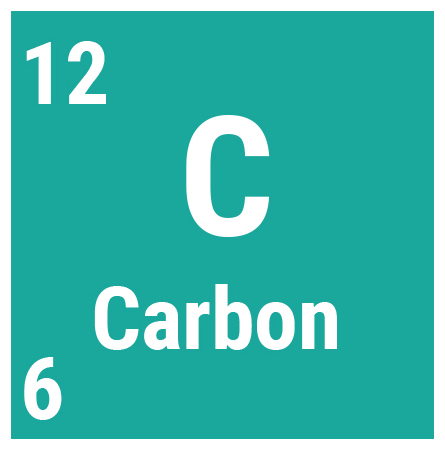| Isotope | Atomic mass (Da) | Isotopic abundance (amount fraction) |
|---|---|---|
| 16O | 15.994 914 619(1) | [0.997 38, 0.997 76] |
| 17O | 16.999 131 757(5) | [0.000 367, 0.000 400] |
| 18O | 17.999 159 613(5) | [0.001 87, 0.002 22] |
The correct atomic no. However, Carbon has an atomic no. Of 6 and an atomic mass of 12.
Two major sources of oxygen are air and water. Relative isotope-ratio measurements of oxygen in water and many other substances commonly are expressedrelative to VSMOW reference material, in which case the δ18O value of VSMOW is 0 ‰ by definition. However,two other scales have been used commonly: (1) in studies of atmospheric gases and related topics, atmosphericO2 may be assigned a δ18O value of 0 ‰, (2) in studies of marine carbonate deposits andrelated topics, a specimen of marine carbonate (PDB, Peedee belemnite) may be assigned a δ18O value of 0 ‰. Pirates of the caribbean latest movie download.
Relating atomic weights to relative isotope-ratio measurements of oxygen may be complicated in principleby the observation that the exponent in the mass-dependent fractionation equation may deviate significantlyfrom one half, and by the fact that relative isotope-ratio measurements generally do not include17O. Nevertheless, though the value of the 17O exponent may be as high as 0.52 or 0.53 in commonsubstances, the atomic-weight errors caused by these differences are small compared to the uncertaintyof the 'absolute' measurement of atomic weight. Larger deviations from mass-dependent fractionationof 18O, 17O, and 16O have been observed in minor atmospheric gases such as O3, CO2, N2O,and CO, apparently as a result of non-mass-dependent photochemical reactions. Similar featureshave been observed in sulfate and nitrate in atmospheric deposition and some types of soils,and it is likely that the number and variety of samples reported to exhibit non-mass-dependent oxygen isotopefractionation will increase rapidly in the future.
- Oxygen is the chemical element with the symbol O and atomic number 8. It is a member of the chalcogen group in the periodic table, a highly reactive nonmetal, and an oxidizing agent that readily forms oxides with most elements as well as with other compounds.
- Atomic oxygen O CID 159832 - structure, chemical names, physical and chemical properties, classification, patents, literature, biological activities, safety/hazards/toxicity information, supplier lists, and more. COVID-19 Information. Public health information (CDC) Research information (NIH) SARS-CoV-2 data (NCBI) Prevention and treatment.
- IUPAC Standard InChIKey: QVGXLLKOCUKJST-UHFFFAOYSA-N CAS Registry Number: 17778-80-2 Chemical structure: This structure is also available as a 2d Mol file; Permanent link for this species.
- Atomic oxygen is created when O2 molecules break apart, a process made easier in space because of the abundance of ultraviolet radiation. According to NASA, 96 percent of low-Earth orbit's.
Variations in the atomic weight of oxygen in surface water on the earth commonly are correlated withthose of hydrogen, as the isotopes of both elements are fractionated by evaporation and condensation.Whereas ocean water has almost constant values of H and O atomic weight worldwide (near that ofVSMOW), precipitation varies widely with the lowest values being at high latitudes. Natural variationsin the isotopic composition of oxygen have been exploited since the 1950s in studies of the hydrologicalcycle, biogeochemistry, and paleoclimates.
The highest natural terrestrial δ18O value is reported from marine N2O with δ18O = +109 ‰, x(18O) = 0.002 218, and Ar(O) = 15.999 76. The lowest natural δ18O value is reported from Antarctic precipitation with δ18O = −63 ‰, x(18O) = 0.001 875, and Ar(O) = 15.999 04. Given the relatively small uncertaintiesin the best 'absolute' measurements (0.25 ‰) and in typical relative measurements (0.1 ‰ or less), it is evident that the uncertainty of the standard atomic weight of oxygenis dominated by real natural variations.
Atomic weights of the elements 2009 by M.E. Wieser and T.B. Coplen. Pure Appl. Chem. 2011 (83) 359-396
CIAAW
Oxygen
Ar(O) = [15.999 03, 15.999 77] since 2009
The name derives from the Greek oxys for 'acid' and genes for 'forming' because the French chemistAntoine-Laurent Lavoisier once thought that oxygen was integral to all acids.
Oxygen was discovered independently by the Swedish pharmacist and chemist Carl-Wilhelm Scheele in 1771, and the English clergyman andchemist Joseph Priestley in 1774. Scheele's Chemical Treatise on Air and Fire was delayed in publicationuntil 1777, so Priestley is credited with the discovery because he published first.
Natural variations of oxygen isotopic composition
Isotopic reference materials of oxygen.
Patient discussion about oxygen
Q. hi my name is ray i am from england and i am on oxygen i am a retainer of carbon monxide do you guys know whoa any place working with stem cell or natural medical emial rsantolla@aol.co.uk

http://organizedwisdom.com/Stem_Cells_for_Emphysema
Atomic No Of Oxygen Periodic Table
Q. HONEY Use honey to seal MRSA (METHICILLIN-RESISTANT STAPHYLOCOCCUS AUREUS) wound.
Atomic No Of Oxygen

How To Find Atomic Number Of Oxygen
More discussions about oxygenAtomic No Of Oxygen Used
